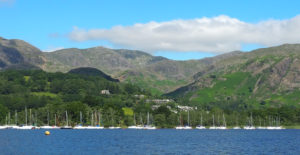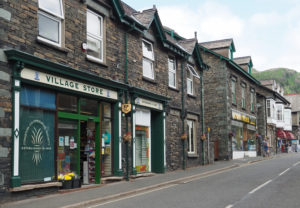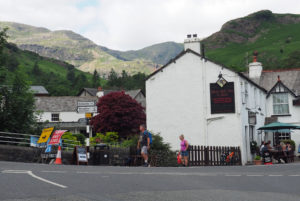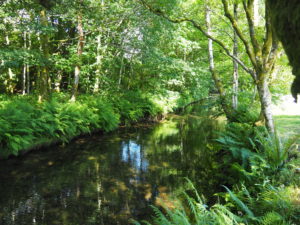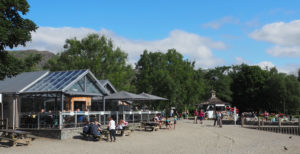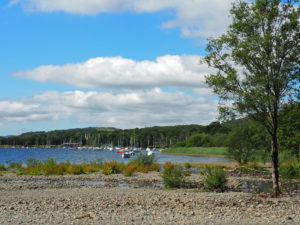Although not as popular as honeypots like Windermere and Ambleside, Coniston is a popular tourist destination. There is boating on the lake and a small cafe by the pier. The beach is pebbly but that doesn’t stop children from paddling.
The village is set back from the lake side and surrounded by the peaks of the Old Man and Wetherlam. Houses scramble up the hillside.
The flat land around the lake provided good farming and much of the land was owned by the monks of Furness Abbey.
As well as farming, iron ore has been smelted here since Medieval times, using charcoal to fuel the furnaces. The discovery of Copper in the C16th led to a rapid expansion in population and copper was mined until the early C20th. The hills have been quarried from slate and provided work for over one hundred families.
A gunpowder works not only supplied local needs but also much of the Uk requirements until the early C20th. Many of the small houses climbing up the hillside were miners cottages.
The copper ore was brought down from the mines in carts and transferred to boats that sailed down the lake to Greenodd where it was transferred to barges and taken by canal to Ulverston. It was then shipped to smelting plants in St Helen’s and Swansea.
The Furness Railway arrived in 1859. Originally intended to transport copper ore, it soon began to carry passengers, leading to a sudden influx of visitors. The “Steam Yacht Gondola”:https://www.visitcumbria.com/amb/coniston-steam-yacht-gondola/ was built to provide leisure trips on the lake.
The village is also associated with several famous names. Poet and social critic John Ruskin bought Brantwood on the opposite shore and is buried in the churchyard.
Arthur Ransome learnt to sail on Coniston Water and the area provided inspiration for many of his Swallows and Amazon books.
Donald Campbell broke four World Water Speed Records on the lake in the 1950s and died in 1967 when his boat, Bluebird flipped and sank in his final attempt. He is remembered in the Church and his body is buried in the new churchyard when it was recovered from the lake in 2001. Bluebird has been restored and there are hopes it will return to the Ruskin Museum for display.
Coniston is still as popular today and is a centre for walking. Shops along the main street are geared to visitors.
The “Black Bull”:https://www.blackbullconiston.co.uk in the centre of the village is home to the “Coniston Brewing Company”:http://www.conistonbrewery.com/ which hit the headlines when its Bluebird Bitter was acclaimed CAMRA supreme champion beer in 1998.
Church Beck flows down through the centre of the village with Yewdale Beck flowing down the north eastern edge. Church Beck provided hydroelectricity to the village from the 1930s to 1950s. In 2003, the Coniston Hydro Electric Power Co Ltd was formed to again provide electricity to the area.
The “Ruskin Museum”:https://ruskinmuseum.com/ Ruskin Museum not only has information and artefacts from John Ruskin, Arthur Ransome and Donald Campbell, it also has information about the history of the area.
